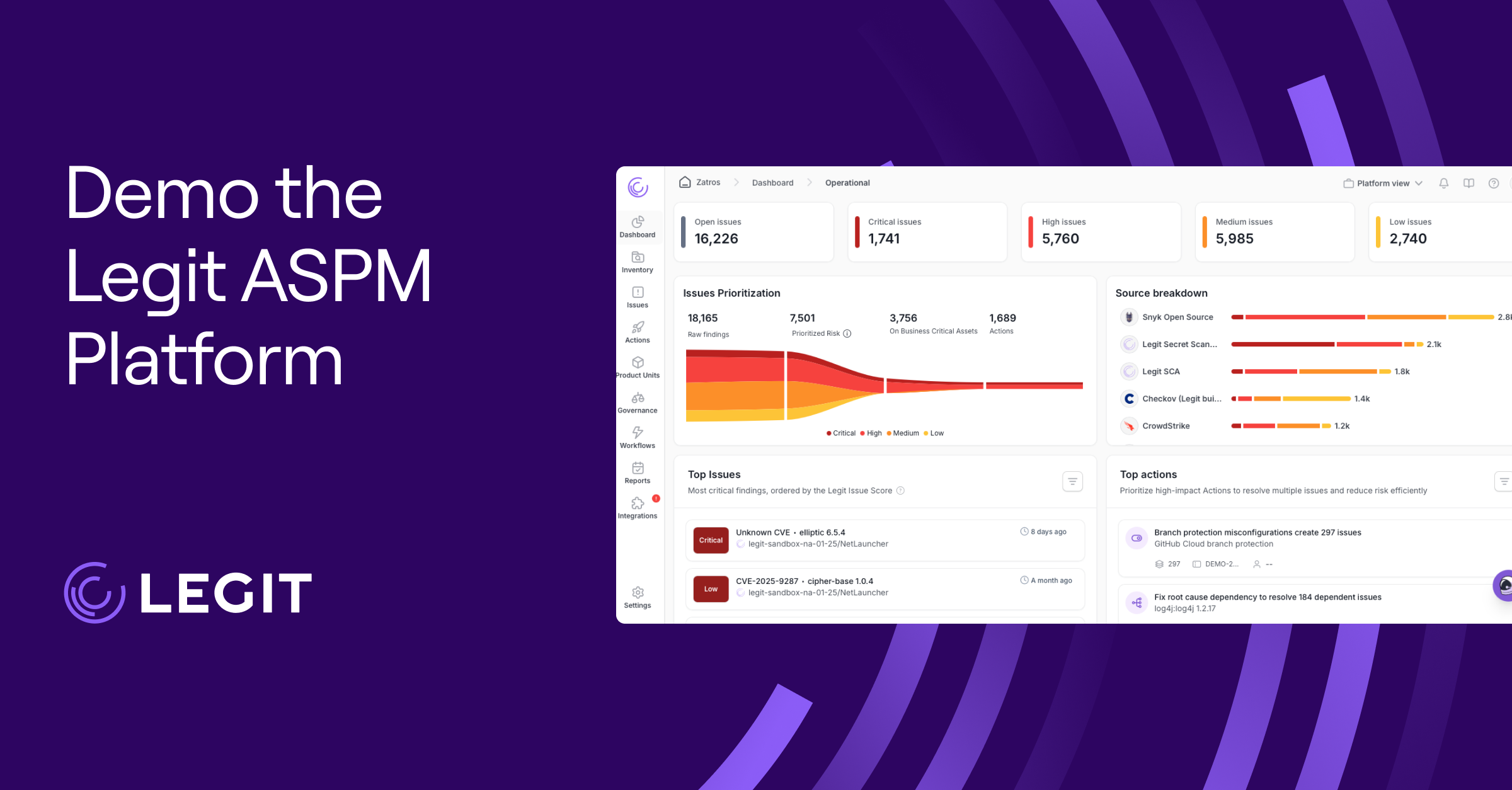When someone bypasses your system's authentication, they effectively sneak past your defenses without needing valid credentials. An authentication bypass vulnerability creates this scenario, allowing attackers direct access to sensitive information and critical system functions.
These vulnerabilities expose your web application and put sensitive data and system integrity at risk. And businesses in the tech and financial services industries handling vast amounts of sensitive information face particularly high stakes.
Addressing authentication bypass vulnerabilities maintains trust, compliance, and operational resilience. Here’s how.
What Is an Authentication Bypass Vulnerability?
Authentication bypass is a specific type of security vulnerability where weaknesses in an application's authentication process allow attackers to gain unauthorized access without valid credentials.
Unlike credential theft, authentication bypass involves exploiting flaws directly within your software's authentication logic. These authentication vulnerabilities expose fundamental gaps in your application’s underlying security architecture rather than weaknesses from stolen passwords alone.
Developers often introduce these vulnerabilities through coding errors or misconfigurations. For instance, developers might unintentionally leave certain internal pages accessible through predictable URLs, fail to validate user input, or inadequately secure session identifiers. Attackers can exploit these mistakes to bypass security features, granting them easy entry into restricted areas. Then, they could escalate privileges or modify sensitive data by exploiting flaws in the login flow.
How Does Authentication Bypass Work?
Attackers exploit authentication bypass vulnerabilities by taking advantage of flaws in how an application verifies users. Instead of stealing credentials, they launch a bypass attack to sidestep authentication entirely.
This often involves navigating directly to internal pages that aren't properly protected, altering URL parameters, or tampering with session tokens to trick the system into granting access.
Sometimes, attackers utilize SQL injection to circumvent the checks that typically block them. Attackers may also send a crafted HTTP request to endpoints that fail to validate access correctly or exploit exposed HTTP parameters.
7 Examples of Authentication Bypass Vulnerability
Attackers have several techniques for exploiting common authentication vulnerabilities. Here are some of the most common and impactful methods:
1. Brute-Force Attacks
Attackers use automated tools to test username and password combinations until one works rapidly. These attacks succeed when applications don’t enforce rate limits, account lockouts, or basic multifactor authentication (MFA) protections that prevent brute-force methods from being used to bypass security.
2. SQL Injection
SQL injection allows attackers to submit malicious SQL statements through input fields—often login forms—to manipulate backend databases. If queries aren’t properly sanitized, attackers can skip authentication checks altogether. This method is hazardous when input validation is inconsistent or missing entirely.
3. Cross-Site Scripting
Cross-site scripting (XSS) vulnerabilities allow attackers to inject malicious scripts into web pages viewed by other users. In an authentication context, this becomes dangerous when attackers use XSS to steal session tokens and impersonate legitimate users.
Stored XSS occurs when malicious scripts are permanently saved on the server and delivered to users later. At the same time, the application triggers reflected XSS immediately when it reflects malicious input in its response. Both can bypass login mechanisms by hijacking valid sessions from authenticated users.
4. Forced Browsing
Forced browsing occurs when internal pages or resources don’t have adequate protection. If attackers can access sensitive URLs directly, such as by guessing or entering a predictable endpoint, they can bypass authentication entirely.
5. Insecure Direct Object Reference
Attackers exploit insecure direct object reference (IDOR) vulnerabilities by modifying URL parameters, such as account IDs, to access unauthorized data. When systems fail to validate ownership or authorization for objects like user IDs or document names, attackers swap values and view resources that belong to other users.
6. Session Hijacking
When session tokens aren’t properly protected, attackers can steal or guess them to hijack a valid user session. Once attackers steal or guess a valid session ID or cookie, they can impersonate the user and bypass login entirely. Attackers can even hijack logged-out sessions if the system doesn’t handle session IDs securely.
7. Business Logic Vulnerabilities in Authentication
Not all vulnerabilities are technical in nature. Some exploit flawed workflows. Attackers can manipulate the flow to bypass checks if a login process doesn’t validate each step or relies on weak assumptions (like trusting client-side redirects). These business logic vulnerabilities often go undetected in scans because the application technically works—it just works in the wrong way.
These examples show how varied authentication bypass methods can be. Combining strict code validation with ongoing application security testing is key to catching these vulnerabilities before attackers do.
How to Prevent Authentication Bypass Vulnerabilities
Authentication attacks succeed when systems miss the basics or overlook subtle design flaws. Here’s how to tighten your defenses against bypass vulnerabilities:
- Enforce strong authentication protocols: Use MFA to reduce the chances of unauthorized access. Combine this with intelligent account lockout policies and limits on login attempts to reduce vulnerability to brute-force and credential stuffing attacks.
- Sanitize and validate all user inputs: Login forms and search bars are common entry points for bypass attacks. Validate inputs and use strict sanitization to stop bad data from slipping through.
- Keep access checks server-side: Avoid depending on frontend controls for authorization. Developers should always check access rights on the backend, especially for high-value resources that attackers could expose through URL manipulation or forced browsing.
- Strengthen session handling practices: Generate session tokens securely and rotate them after login or privilege changes. Secure cookies with flags like HttpOnly and Secure, and invalidate sessions after logout or inactivity.
- Check workflows for business logic issues: Even with clean code, developers can create security gaps by skipping or reordering authentication steps. You should regularly review user flows to identify and close logic gaps before attackers can exploit them.
- Run regular security assessments: Penetration testing is a proven method for exposing authentication bypass risks. Pair it with SAST and DAST tools to catch bugs before they hit production. Just make sure the testing doesn’t stop once the app goes live.
- Embed security into your SDLC: A secure SDLC approach bakes security into every stage of development so you catch bypass risks earlier and fix them faster.
For stronger alignment with best practices, you should follow OWASP Top 10 guidelines—especially A07: Identification and Authentication Failures. Also consider NIST SP 800-63B for secure authentication mechanisms, including password policies and Authenticator Assurance Levels (AALs).
Preventing Authentication Bypass With Legit Security
Authentication bypass vulnerabilities often stem from overlooked access controls, weak session handling, or flawed business logic. Preventing them requires continuous input validation and regular testing throughout the development lifecycle.
Legit Security helps you catch these issues before they become threats. By integrating directly into your CI/CD pipeline, Legit enforces security policies, scans for authentication flaws, and flags risky logic gaps early. It gives your team the visibility to prevent bypass vulnerabilities from slipping through—and the confidence to deploy securely.
Download our new whitepaper.


